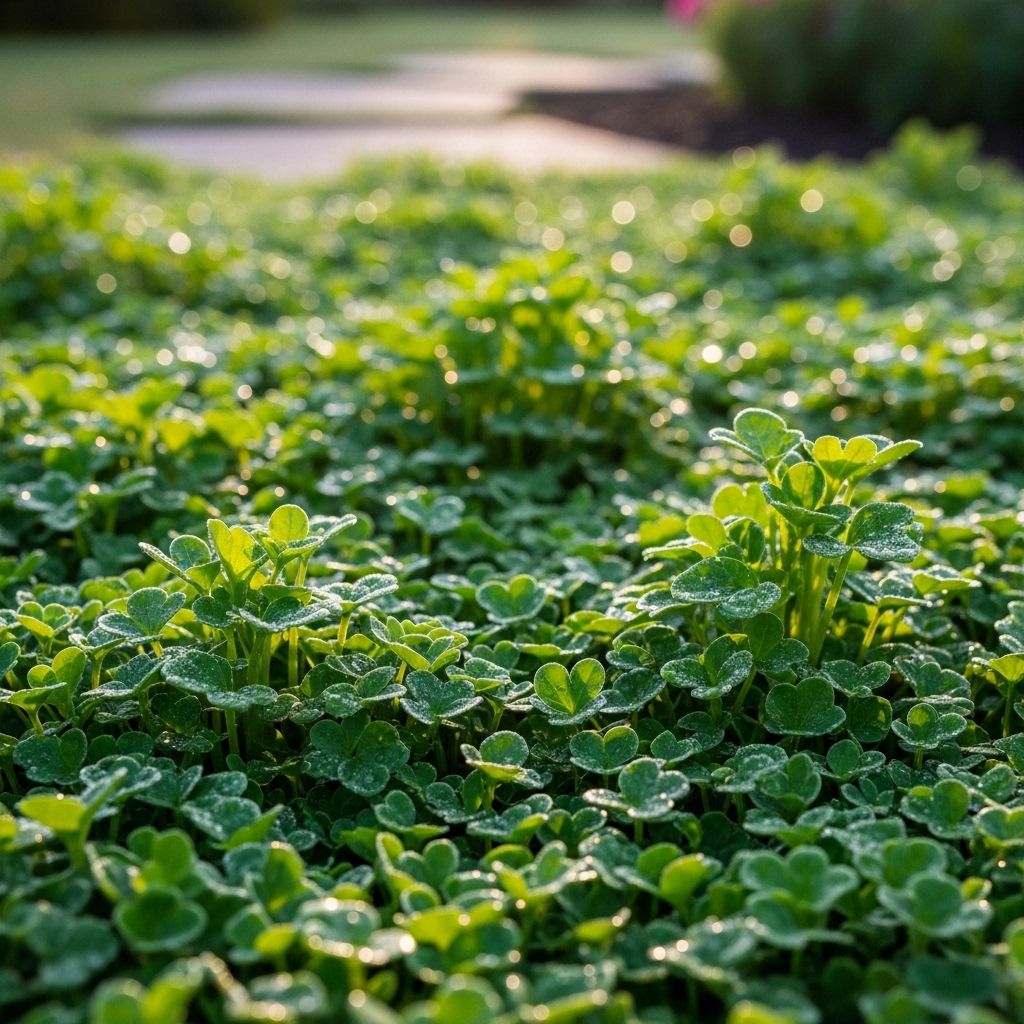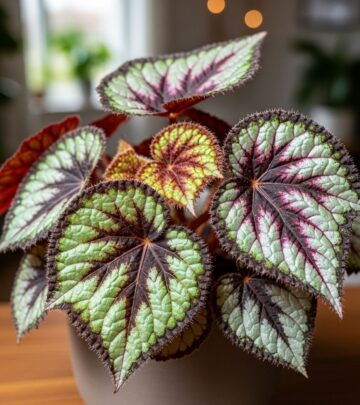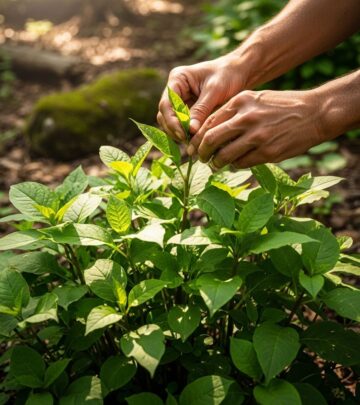Dichondra Ground Cover: 5 Benefits & Versatile Uses
Discover the beauty, versatility, and simple care of Dichondra as a lush lawn alternative or ornamental ground cover for every garden.

Image: HearthJunction Design Team
What is Dichondra?
Dichondra is a hardy, low-growing perennial plant admired for its lush, trailing foliage and versatility in garden design. Belonging to the morning glory family (Convolvulaceae), Dichondra functions both as a practical ground cover and an ornamental element, prized for its ability to form dense, vibrant mats resembling a natural green carpet. Its unique, kidney- or fan-shaped leaves set it apart from traditional grasses, making it a favorite among gardeners seeking a low-maintenance, visually appealing lawn alternative or accent planting.
Why Choose Dichondra?
- Low Maintenance: Requires minimal mowing and care, perfect for busy gardeners.
- Drought Tolerance: Once established, Dichondra withstands periods of dry weather with ease.
- Attractive Appearance: Its dense, lush mats provide a soft, vibrant, carpet-like effect.
- Versatile Uses: Functions as a ground cover, lawn substitute, in hanging baskets, or as a filler between pavers.
- Adaptable: Thrives in both full sun and partial shade, and is suitable for a range of climates.
Dichondra Varieties
Several main varieties of Dichondra are cultivated for garden and landscape use. The two most popular types include:
- Dichondra repens: Known for its bright green, kidney-shaped leaves; commonly used as a ground cover or lawn alternative in temperate and subtropical climates.
- Dichondra argentea (‘Silver Falls’): Recognized for its silvery-green, trailing foliage; often grown as an accent plant in containers, window boxes, or cascading over walls due to its dramatic appearance.
Key Features of Dichondra
- Height: Typically remains under 2 inches (5 cm), creating a dense, flat ground cover.
- Growth Habit: Creeping and mat-forming, with some varieties exhibiting a gentle trailing habit.
- Color: Leaf color ranges from deep green (Dichondra repens) to shimmering silver (Dichondra argentea).
- Hardiness: Perennial in USDA zones 7–11 (repens) and annual or tender perennial in cooler regions.
- Temperature Tolerance: Maintains color down to 25°F (-3°C).
Best Uses for Dichondra in the Garden
- Lawn Alternative: An elegant solution for replacing traditional grass in small yards, shady corners, or areas difficult for turf to thrive.
- Ground Cover: Ideal for filling bare spots, under trees, or around shrubs where grass struggles.
- Containers and Hanging Baskets: Silver varieties add striking visual interest as they cascade over edges.
- Between Pavers: Softens hard landscaping with lush green swaths.
- Rock Gardens and Slopes: Prevents erosion and requires little upkeep.
Planting Dichondra: Step-by-Step Guide
Establishing a healthy Dichondra patch or lawn substitute is simple with the right conditions and preparation.
1. Choosing the Right Location
- Full sun to part shade (more sun ensures denser growth).
- Average, loose, well-drained soil (avoid heavy, soggy areas).
2. Preparing the Soil
- Remove weeds and debris; loosen the top 2–3 inches of soil.
- Ensure the soil drains freely; amend clay soils with compost or sand.
3. Sowing Seeds or Planting Starters
- Seeds: Sow directly outdoors in late spring once nighttime temperatures consistently exceed 50°F (10°C). Indoors, start seeds 12 weeks before the last expected frost.
- Lightly scatter seed over prepared soil and gently press down. Do not bury deeply—seeds require light to germinate.
- Cover with a fine layer of peat moss for moisture retention.
- Plantlets: Space young plants 4–6 inches apart to allow them to spread into healthy mats.
4. Watering After Planting
- Keep the soil consistently moist, but never soggy, until seedlings are established.
- Water lightly several times a day if hot and dry, especially during germination (7–14 days).
Dichondra Care and Maintenance
This ground cover is prized for its minimal care requirements. Here’s how to keep your Dichondra lush and healthy:
- Watering: Require regular moisture during establishment; once established, Dichondra is drought-tolerant and only needs supplemental watering during prolonged dry spells.
- Mowing: Rarely necessary, but if used as a lawn and growth becomes untidy, mow to 1–1.5 inches high.
- Fertilizing: Feed with a balanced, slow-release fertilizer in spring and mid-summer for best color and growth. Avoid over-fertilizing, which encourages weeds.
- Weed Control: Weed by hand or use a pre-emergent herbicide to prevent invasion by broadleaf weeds.
- Aeration: Aerate compacted soil in high-traffic areas to maintain vigor.
Dichondra Lawn vs Traditional Turf: A Quick Comparison
| Feature | Dichondra Lawn | Traditional Grass Lawn |
|---|---|---|
| Mowing Requirement | Minimal to none | Frequent |
| Drought Tolerance | High | Moderate |
| Fertilizer Needed | Low | Moderate |
| Foot Traffic Tolerance | Low to moderate | High |
| Lawn Texture | Soft, carpet-like | Coarser |
| Shade Tolerance | Good | Variable |
Common Problems and Solutions
- Yellowing Leaves: May indicate poor drainage or overwatering. Ensure the soil is well-drained and reduce watering frequency.
- Poor Germination: Seeds need light to sprout. Avoid burying too deeply and keep lightly moist.
- Weed Invasion: Start with a weed-free bed, mulch lightly, and promptly remove emerging weeds by hand.
- Pests & Diseases: Dichondra is generally pest-resistant but may occasionally suffer from leaf spot or root rot if kept too wet. Improve air circulation and avoid standing water.
Design Ideas with Dichondra
- Green Carpet: Use Dichondra repens for a soft, low, walkable lawn in shaded gardens or under trees.
- Container Drama: Plant ‘Silver Falls’ with upright flowers for a spillover effect in pots and window boxes.
- Mixed Ground Cover: Blend with stepping stones or between pavers for a natural, inviting path.
- Rock Gardens: Let Dichondra tumble over rocks and walls for a lush, living accent.
- Poolside Planting: Its drought tolerance and low profile make it ideal for water-wise, relaxing landscapes.
Dichondra FAQs
Can Dichondra tolerate heavy foot traffic?
Dichondra holds up to moderate foot traffic, but it’s not as resilient as traditional turf. Reserve heavy-use areas for grass or use stepping stones to protect sensitive patches.
Is Dichondra considered a weed?
Dichondra is regarded as a weed in some regions, especially in traditional lawns. However, as a purposeful ground cover, it offers numerous benefits where grass does not thrive.
How fast does Dichondra spread?
Dichondra spreads rapidly when given adequate water and sun, forming a dense mat within one growing season under favorable conditions.
Will Dichondra survive frost?
Dichondra repens tolerates brief, light frosts (down to 25°F/-3°C). In colder climates, it is often grown as an annual or brought indoors.
How do you keep Dichondra looking its best?
- Water deeply but infrequently once established.
- Feed lightly with balanced fertilizer in spring and summer.
- Trim runners or mow occasionally to maintain shape.
- Promptly address weed and pest issues.
Tips for Success with Dichondra
- Start with healthy seed or vigorous young plants for quick establishment.
- Mulch new plantings lightly to conserve moisture and prevent weed competition.
- Avoid overwatering—Dichondra dislikes soggy roots.
- Periodically thin out thick patches to encourage air flow and reduce disease risk.
Conclusion
Dichondra stands out as a practical and beautiful ground cover, offering gardeners a lush, maintenance-friendly alternative to traditional lawns. Its resilience and versatility make it suitable for a wide range of landscaping scenarios—from full sun to partial shade, and from elegant pots to expansive green carpets. Whether you seek an eco-friendly lawn substitute, a decorative accent, or a problem-solver for challenging garden spaces, Dichondra delivers year-round appeal with minimal fuss. Try incorporating this adaptable plant into your garden for enduring beauty and ease of care.
References
- https://www.bhg.com/gardening/plant-dictionary/annual/dichondra/
- https://www.outsidepride.com/resources/planting/dichondra-planting/
- https://www.gardeningknowhow.com/ornamental/groundcover/dichondra/growing-dichondra.htm
- https://www.stoverseed.com/dos-and-donts-for-dichondra/
- https://www.mckaysgrassseeds.com.au/how-to-plant-dichondra-repens/
Read full bio of Srija Burman












